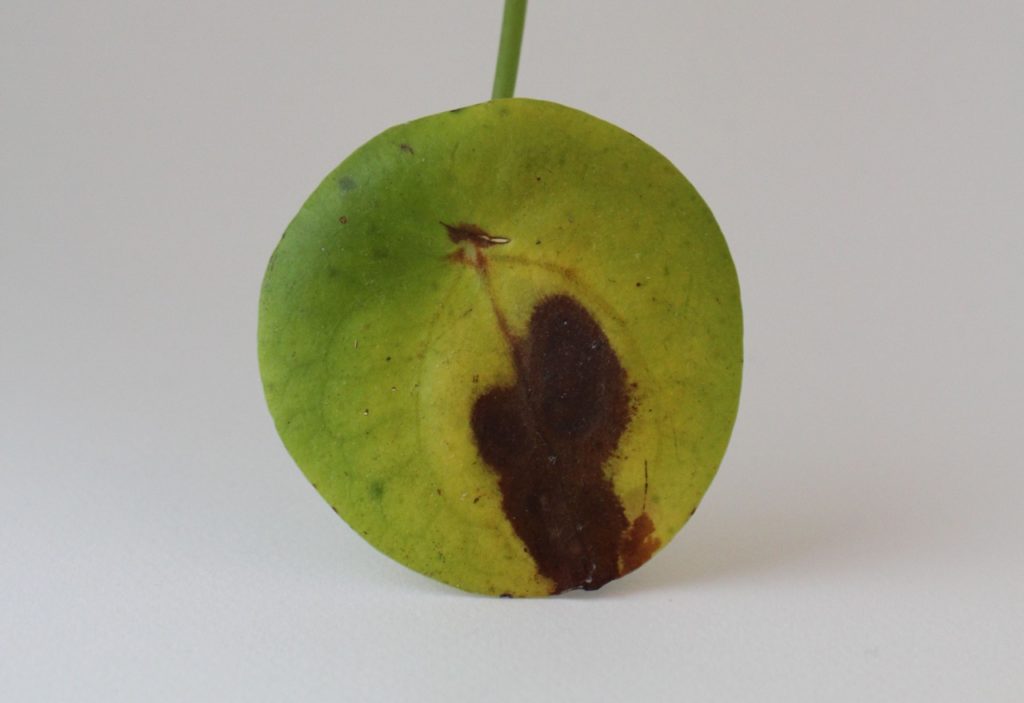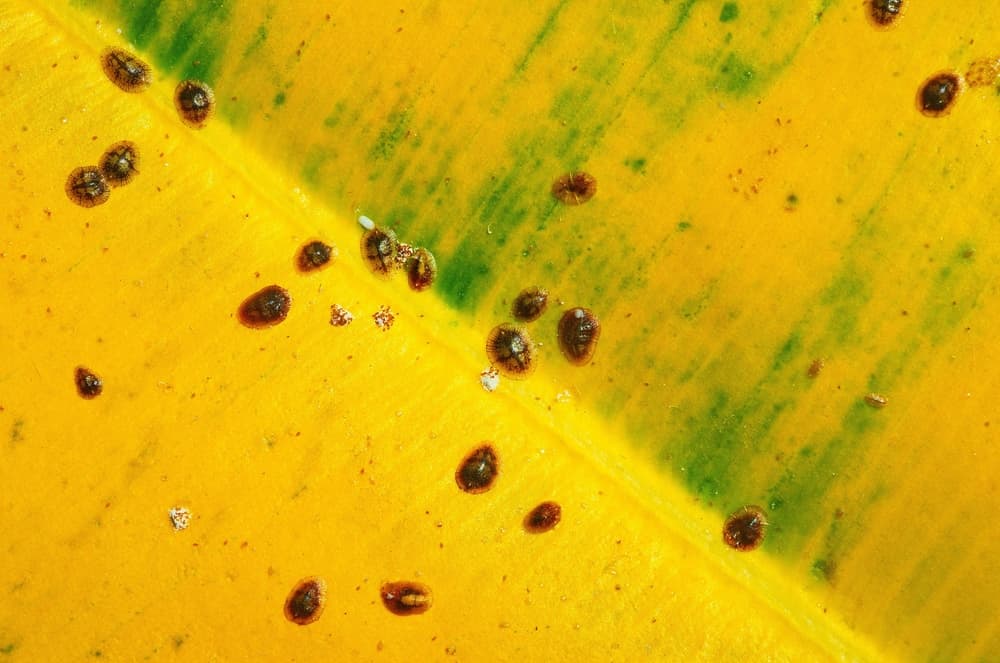Are Leaves On Your Chinese Money Plant Turning Yellow Or Brown? Here’s Why

HOUSEPLANTS > PILEA-PEPEROMIOIDES > DISCOLOURED

Elizabeth is a Permaculture Garden Designer, Sustainability Consultant and Professional Writer, working as an advocate for positive change. She graduated from the University of St. Andrews with an MA in English and Philosophy and obtained a Diploma in Applied Permaculture Design from the Permaculture Association.
Reviewed By DAN ORI

Dan has over 27 years’ under his belt caring for plants and gardens. Working as a Horticultural Instructor and Consultant, he draws on a diverse range of experience that includes working as a Head Gardener, Tree Surgeon, Garden Centre Trouble Shooter, and writer of academic papers. Dan has a Level 3 Diploma in Horticulture and is currently a candidate for the RHS’s most prestigious award – The Master of Horticulture.
IN THIS GUIDE
CHINESE MONEY PLANT GUIDES
Curling Leaves
Discoloured Leaves
Propagation
Repotting
Chinese money plants are popular houseplants that are relatively easy to grow and care for indoors in the UK.
However, when growing these plants, there are certain things that can go wrong and brown or yellow leaves on your plant are often a sign of a problem.
Most commonly, leaves turn brown or yellow if there are problems with the environmental conditions in which the plant is grown.
Most commonly, brown or yellow leaves are a sign of a problem with:
- Water or drainage issues.
- Inadequate light levels.
- Changing and inconsistent temperature levels.
- Nutrient deficiencies in the growing medium.
- Pests or diseases.
Read on to understand how you can prevent these issues or how to fix them if your leaves have already become discoloured.
1) Underwatering Or Waterlogging
Many of the most common issues that crop up when growing Chinese money plants relate to water.
Most commonly, overwatering is the most likely problem when plants are showing signs of stress.
However, while these succulent plants are tolerant of fairly low-water conditions, a lack of water accessibility can also be the issue.
If you are overwatering or underwatering, this is something that can easily be remedied, and once you are delivering the right amount of water, the plant should recover.
Make sure that the container is not too large for the root system of the plant, since too large a container may promote waterlogging, as roots won’t reach the edges.

Also check to make sure that the drainage of the pot you are using has not been compromised by roots blocking drainage holes.
A plant becoming root-bound can affect water uptake and can also cause leaves to discolour.
Waterlogged soil, caused by overwatering or a lack of drainage, can lead to root rot which can cause a range of other serious issues for your plant.
“In my plant clinics held at garden centres, the most common cause of yellowing encountered in Pilea and all houseplants is waterlogging,” shares Horticultural Consultant Dan Ori.
“This is normally because the plant sits in a pot cover with no drainage and when the plant is watered it is left swimming in excess water. I advise growing in a pot with drainage holes that you place in a decorative pot cover.
“Let the plant dry almost completely out then you can take the pot with drainage holes out of its decorative pot cover and water until soaked through (the kitchen sink is a good place to soak it), after allowing it to drain for five minutes return it to its pot cover.”
2) Incorrect Light Levels
Leaves can turn pale and droop where sunlight is insufficient.
Brown spots can develop due to sunburn or sun scorch on leaves exposed to too much direct light.

So, another important thing to check is that plants are getting the right amount of light.
Make sure your plant is in a bright location, but one where it is out of direct sun during the brightest part of the day.
3) Temperature Fluctuations
Leaves can sometimes die back or turn brown due to exposure to low temperatures.
Remember, these plants are tender houseplants and should not be exposed to temperatures below around 12°C.

Brown or yellow leaves can also be a sign of stress due to extreme fluctuations in temperature inside your home, or when transferred outside in summer.
Make sure you place your plant indoors in a location where it is not exposed to sudden draughts and do not place it too close to a heat source, such as a stove or radiator, where temperatures swing from one extreme to the other.
4) Nutrient Deficiencies
Another potential cause of yellow or brown leaves in Chinese money plants is a deficiency in certain nutrients.
Although it can be challenging to determine which nutrients are lacking from the colour of the leaves alone, regular feeding can help prevent any such issues.

To keep your plant healthy and happy, it is best to feed your houseplant with a weak, organic liquid plant feed every month or so during the growing season, and to repot your plant every 2-3 years with a new growing medium.
5) Pests Or Diseases
Brown lumps on the leaves of your Chinese money plant can be scale insect infestation and a number of other pests that commonly plague houseplants can also leave their mark through the colour of the leaves.

However, environmental issues are more common causes, so you should rule out the causes mentioned above before you delve deeper and look into other potential causes for brown or yellow leaves.
Place your plant in the right location, in a suitable container with a suitable growing medium and care for it correctly, and you are far less likely to run into any issues and see signs of stress like brown or yellow leaves on your plant.
